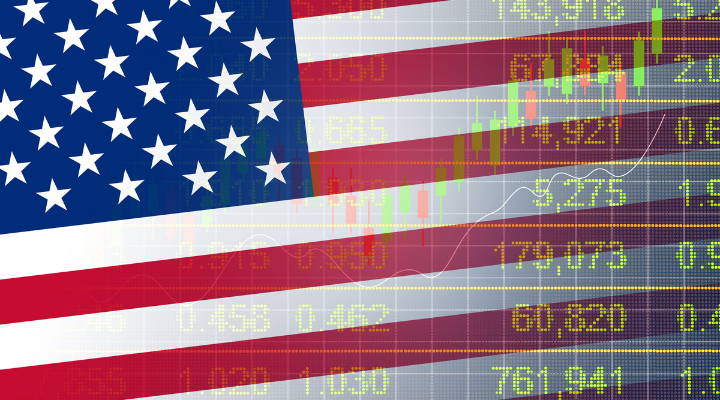Every year as we get around to pinning a new calendar to the wall, financial writers start focusing on two topics… the big events from the year gone by and the big opportunities for the coming one.
Many sites will make calls on certain stocks based on things like developing trends, companies’ past performance, and just enough analysis to justify their logic.
(In all cases, we recommend that you always do your due diligence before investing in any opportunity, to make sure it fits in your investment goals and risk profile.)
We don’t do that. But…
If you are interested in a small group of stocks that has the potential to outperform one of the major market indexes, there’s a strategy we’d like to introduce you to…
The “Dogs” of the Dow
What’s that?
The “Dogs” concept was popularized in 1991. It’s an investing strategy that looks to outperform the Dow Industrials by buying the 10 stocks in the index with the highest dividend yields.
Why would this be a good idea?
A company’s dividend yield is its annual dividend divided by the share price of the stock. Let’s say Company X pays a $2.50 annual dividend and is currently trading for $27. That means it has a 9.2% dividend yield.
However, if Company X is trading for $19, its dividend yield would be over 13%.
So a higher dividend yield generally indicates a lower stock price.
Remember, the Dow Industrials is an average of 30 of the bluest of the blue chip companies in the market. All solid, well-capitalized companies. Not a high-risk name in the bunch.
So when one of these stocks’ dividend yield rises, it usually means its price has come under some cyclical or temporary pressure. Which should make them poised to outperform the market as their share prices recover.
How does it work?
The Dogs of the Dow is basically a “set it and forget it” strategy. You buy the Dogs in January, hold them through the year, and then adjust your holdings for the following year.
Simple.
But how does it perform?
You might be surprised.
A Pretty Impressive Record
In an era of Nvidia-like return expectations, a lot of investors think of dividend paying stocks as “stodgy” companies that can’t keep up the growth pace with the rest of the market. But these “Dogs” have done pretty well relative to the DJIA index.
Between 2007 and 2009, the Dogs portfolio was beaten by the Dow, but…
In 2010 it was Dogs up 16% – Dow plus 9%…
In 2011 the Dogs beat the Dow by 11 percentage points…
In 2012 it was a dead heat with both rising roughly 10%…
In 2013 it was the Dogs again closing up 35% vs the Dow’s 30%…
In 2014 it was a closer contest with the Dogs up 11% and the Dow up 10%…
In 2015 the Dogs gained 3% while the Dow was flat…
In 2016 it was Dogs up 20% and the Dow up 17%…
In 2017 the Dogs took it on the chin gaining 19% vs. the Dow’s 25% rise…
In 2018 the Dogs fell 1.5% while the Dow dropped 6%…
In 2019 the Dogs managed a 15.4% gain while the Dow posted a 22.3% rise…
In 2020 the Dogs got clobbered losing 12.6% while the Dow gained 7.2%…
In 2021 the Dogs got some revenge rallying 25.3% compared to 21% for the Dow…
In 2022 it was Dogs plus 2.2% – Dow minus 8.8%…
And in 2023 the Dogs got edged gaining 10.1% vs the Dow’s 14.4% move.
Overall, according to Nasdaq, “From 2000 to 2022, the Dogs of the Dow had an average annual return of 8.7% compared to 5.8% for the Dow Jones Industrial Average (DJIA).”
What about last year?
In 2024 the Dogs were, well… dogs. The portfolio lost 2.97% while the Dow as a whole was up 12.8%.
Their performance lagged in large part on the backs of healthcare/pharmaceutical stocks. Amgen was down 9.5% and Johnson & Johnson fell 7.7%. But the biggest loser in the bunch was Walgreens which took a huge 64.3% hit thanks to a combination of bad business decisions and industry pricing pressures.
Chemical conglomerate Dow Inc. also took a dive dropping 26.8%.
The only two tech stocks, IBM and Cisco gained 34.4% and 17.2% respectively.
One of the chief criticisms of the strategy is that it may overweight an investor in one particular sector. That appears to have been a factor.
But it’s also worth noting that the Dogs have a tendency to bounce back. If you look at the returns above, the Dogs portfolio got its butt kicked in 2020 only to rebound to outperform in 2021. (And Walgreens got dropped from the index.)
So are the Dogs of the Dow right for you?
Only you can determine that by doing your due diligence.
But if you are interested in looking into this unique portfolio, here are the Dogs for 2025…
Verizon (VZ) — 6.78%
Chevron (CVX) — 4.50%
Amgen (AMGN) — 3.65%
Johnson & Johnson (JNJ) — 3.43%
Merck (MRK) — 3.26%
Coca-Cola (KO) — 3.12%
IBM (IBM) — 3.04%
Cisco Systems (CSCO) — 2.70%
McDonalds (MCD) — 2.44%
Procter & Gamble (PG) — 2.40%


